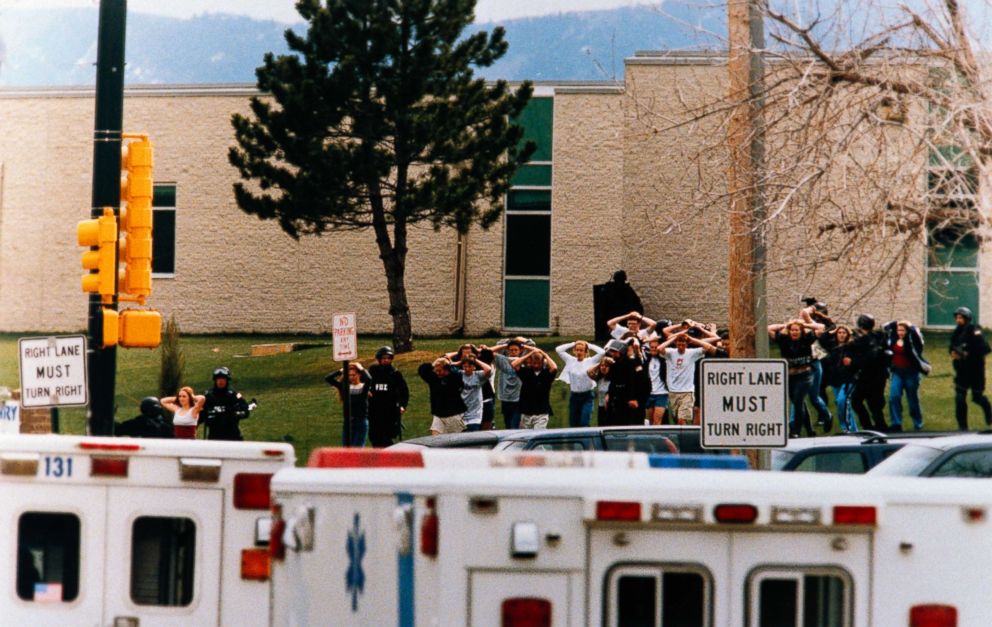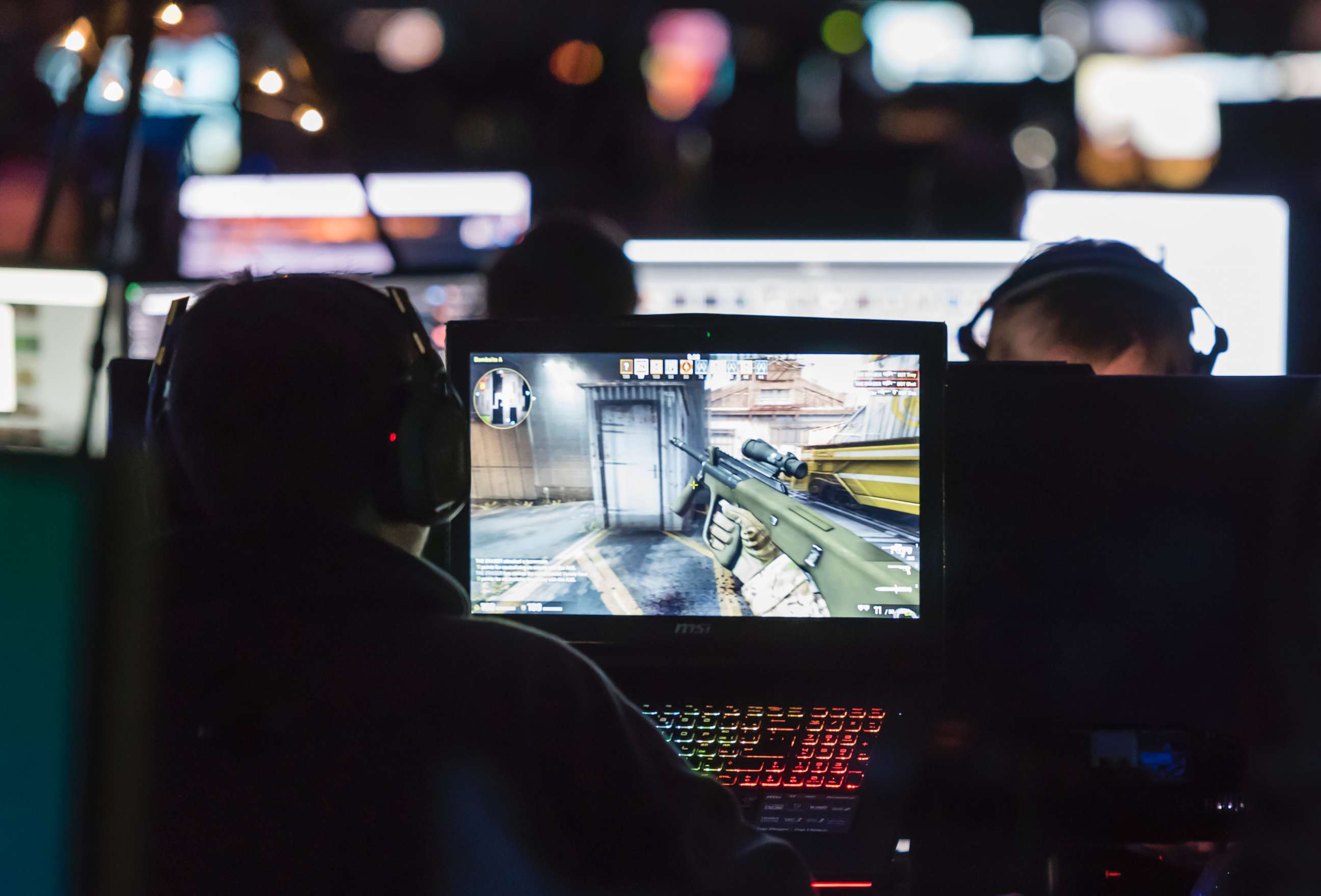Breaking down the debate over violent video games and school shootings
The suggestion that video games influence mass shooters has surfaced again.
The investigation into the latest deadly school shooting is far from over, but that hasn't stopped some people from drawing conclusions about the alleged shooter's influences.
Texas Lt. Gov. Dan Patrick argued that violent video games have created young people who are "desensitized to violence."
"Many [students] have lost empathy to their victims by watching hours and hours of video, violent games," Patrick said on ABC News' "This Week" Sunday, two days after 10 people died at a Santa Fe high school.
There’s no evidence indicating how often the alleged shooter, a student at the school, played video games, if at all.

But there’s nothing new about the line of thinking that violent video games are a causal factor in deadly shootings, prompting years of research that has resulted in a range of conclusions.
Both sides of the argument
Some say there is no connection between the shooting that takes place in virtual reality and real life, while others say it can be one of any number of contributing factors.
Two experts with differing opinions include Chris Ferguson, a psychology professor at Stetson University in Central Florida, and Douglas Gentile, a psychology professor at Iowa State University, who have both worked on numerous studies on the topic.
An overview of many studies will show that "we really don't see evidence that early playing of violent video games are related to later criminal violence behaviors or related to serious problems like bullying or dating violence," Ferguson said.
But Gentile notes that many active studies don't include criminal violence or shootings because it would be unethical to allow subjects to participate in such activity.
For Ferguson, the debate is "a generational thing," as many of the people who point a finger at violent video games tend to be older and inclined to use them as a scapegoat because of a lack of understanding and familiarity with the games.
"We're seeing more and more skepticism" of any perceived connection between violent video games and violent offenders, he said, "and I think that's because people that were gamers 20 years ago are now in their 40s and now they are journalists and politicians and scholars. So it's kind of like rock music in the ‘80s, when people thought [heavy metal band leader] Ozzy Osborne was the end of society and now nobody thinks Ozzy Osbourne was the end of society."
Iowa State’s Gentile doesn’t dismiss the connection outright, however, noting that rather than being the singular cause, exposure to media violence, which includes violence on television and in movies as well as on video games, is one of a number of contributing factors that could make someone more inclined to act aggressively.
"A higher consumption of media violence makes people more willing to behave aggressively when provoked," Gentile told ABC News.
He pointed out that there are any number of other risk factors and protective factors -- including an individual's sex (boys are naturally more disposed to be violent than girls, he said), how they're doing in school, whether they're being bullied or whether they come from a stable home -- that play significant roles as well.
"Every time we have a tragedy like a school shooting, we ask the wrong question: We ask what was the cause ... we assume there was a single cause," he said.
"We don't do things for a single reason only, ever."
Whatever the causes, the American Psychological Association (APA) passed a resolution in 2015 declaring that “scientific research has demonstrated an association between violent video game use and both increases in aggressive behavior, aggressive affect, aggressive cognitions and decreases in prosocial behavior, empathy, and moral engagement,” among other findings.
As a result, the group called for further research and study in different areas of the issue and called on the rating system for video games to be refined, as well as further education for students and families.
More than 90 percent of U.S. children play some kind of video games, according to the APA.
Past examples
The investigation into the Santa Fe shooting is ongoing and no findings either confirming or denying any connection to video games have been reported, but the investigations into prior shootings have raised the possible connection.
One of the earliest was the 1999 shooting in Columbine, Colorado, where the two shooters were found to be fans of first-person shooter video games.
"Those kids had uninvolved parents," Iowa State’s Gentile said of shooters Eric Harris and Dylan Klebold. "Those kids had psychiatric illnesses. Those kids had been bullied. Those kids also consumed media violence. Those are just some of the risk factors. Which one was the cause?"

Stetson University’s Ferguson pointed to other instances where shooters did play some violent video games while also having a lengthy history of playing other nonviolent video games. Virginia Tech shooter Seung-Hui Cho was reportedly a fan of “Sonic the Hedgehog,” and Sandy Hook shooter Adam Lanza had a history of playing shooting games but also spent hours playing “Dance Dance Revolution.”
"When a shooter is an older male or more rarely a female, the issue of video games is never brought up," Ferguson said, citing the Las Vegas shooter Stephen Paddock as one such example.
"It allows people to preserve this narrative," he said.
Likeliness of changes in the laws
When it came time for the U.S. Supreme Court to weigh in on the violent video game debate in 2011, and in their case, the justices ruled on the side of video games, interpreted them as being protected under the First Amendment rights.
The case stemmed from a California law that banned minors from buying violent video games while unsupervised. The state court had nullified the law, which was backed by Gov. Jerry Brown, and the Supreme Court upheld the lower court's decision, voting 7-2 against the California law.
"Psychological studies purporting to show a connection between exposure to violent video games and harmful effects on children do not prove that such exposure causes minors to act aggressively," the syllabus of the decision reads.
Gentile said that given the First Amendment protections, "limiting access [to video games] is probably never going to work in this country, but what could work better is having a universal rating system."
The current rating system used on video games in the United States includes grades of E for Everyone, E 10+ for content generally suitable for ages 10 and up, T for Teen or those 13 and older, M for Mature which denotes 17 and up, and Adults Only for those 18 and over.

President Donald Trump touched on the confusion over rating systems during a listening session with gun violence victims at the White House in the wake of the Parkland, Florida, shooting this year. In his comments, Trump seemed to suggest that there should be a violence-specific rating on movies and video games, or perhaps it should be incorporated more into the existing systems.
For Gentile's part, making a universal rating system across all kinds of media "could improve the information that's given to parents,” he said.
The issue, as he sees it, is a matter of limiting any risk factors as necessary, because certain factors that researchers believe have an impact on physical violence -- like being male or living in poverty -- are impossible or hard to change, while others -- like media violence consumption -- are within grasp.
"If your kid doesn't have any other risk factor for aggression, [violent video games are] probably not going to prompt your kid into hitting other people, and certainly not going to turn them into a school shooter,” Gentile said.
“But that's different from saying it had no effect because if something really had no effect on you, you'd call it boring. So we like the way media violence makes us feel scared and excited and has that adrenaline rush.”




